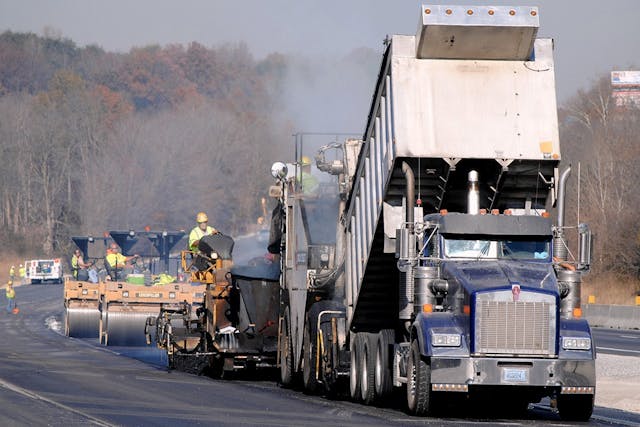Optimize Space Effectiveness with Hot Mix Asphalt Angled Parking Lot Solutions
Optimize Space Effectiveness with Hot Mix Asphalt Angled Parking Lot Solutions
Blog Article
Unlocking the Keys of Hot Mix Asphalt Innovation
Exploring the depths of warm mix asphalt technology discovers a world where accurate formulations and precise processes merge to shape our roadways and facilities. The fusion of aggregates, fillers, and binders isn't just a building job however a critical orchestration of resilience and efficiency. As we peer into the intricate dance of parts, a tapestry of resilience and sustainability unravels. But what exists under this surface of asphaltic proficiency, and what keys wait to be introduced in the realm of leading developments?
Importance of Hot Mix Asphalt
Hot Mix Asphalt plays a crucial function in contemporary framework development because of its durability and cost-effectiveness. As one of the most frequently utilized paving product for roadways, freeways, and parking area, Warm Mix Asphalt offers a series of advantages that add to its significance in building jobs. One vital advantage is its capacity to withstand hefty website traffic tons and rough weather problems, providing a resilient and reputable surface for transportation networks. Additionally, Hot Mix Asphalt is cost-effective in both preliminary construction and long-term upkeep, making it a favored option for many framework jobs.
The sturdiness of Warm Mix Asphalt stems from its structure, which includes accumulations, binder, and filler materials that are meticulously chosen and mixed to meet details efficiency requirements. Generally, the significance of Warm Mix Asphalt in facilities growth can not be downplayed, as it proceeds to be a foundation of modern-day building and construction methods.
Elements of Asphalt Mixes
The structure of asphalt blends contains meticulously selected accumulations, binder, and filler products that are important for achieving certain efficiency demands. Accumulations are the primary element of asphalt blends, providing stamina and security. These accumulations can be natural, such as gravel or smashed stone, or synthetic, like recycled products from old sidewalks. The binder, generally asphalt or asphalt concrete, holds the aggregates with each other and offers versatility and resilience to the mix. The choice of the binder is crucial as it directly influences the mix's efficiency in various weather conditions. Fillers, such as hydrated lime or Portland concrete, are made use of to improve the mix's workability and aging resistance. Angled Parking.
The mix and percentage of these elements play a substantial role in identifying the high quality and performance of the asphalt mix. Engineers thoroughly develop the mix to meet particular requirements, taking into consideration elements like web traffic volume, climate conditions, and sidewalk life-span. Correct choice and balancing of aggregates, binder, and fillers are vital for creating resilient, lasting asphalt pavements.
Combining and Manufacturing Methods

Once the accumulations are picked, the binder, often asphalt concrete, is contributed to bind the materials with each other. The binder's top quality and amount dramatically influence the mix's toughness, resistance, and versatility to ecological elements. In addition, fillers like moisturized lime or Portland concrete might be included to improve particular qualities of the asphalt mix, such as its workability or moisture resistance.
Throughout production, the aggregates and binder are warmed, commonly in between 250-325 ° F(121-163 ° C ), to assist in mixing and ensure correct finish of the aggregates. The mixing procedure needs to be comprehensive to achieve an uniform mix that promotes the preferred efficiency features of the asphalt. Different techniques, such as set mixing or drum blending, are employed to attain constant and top quality asphalt mixes for construction jobs.
Factors Influencing Asphalt Efficiency
Aspects affecting asphalt performance include a variety of variables that influence the resilience, durability, and total quality of asphalt pavements. One vital factor is the high quality of materials made use of in the asphalt mix.

Design considerations, such as pavement thickness and drain, are necessary in making certain the long-term efficiency of the asphalt sidewalk. By thoroughly considering these service providers, designers and aspects can enhance asphalt performance and enhance the service life of sidewalks.
Lasting Practices in Asphalt Innovation

WMA allows for the production and positioning of asphalt blends at lower temperature levels compared to standard hot-mix asphalt, resulting in reduced power intake and greenhouse gas discharges. The usage of porous asphalt blends can aid reduce stormwater drainage concerns by allowing water to penetrate via the pavement and into the ground, advertising all-natural water filtration and charge processes.
Verdict
In conclusion, hot mix asphalt innovation plays a vital duty in modern-day framework development due to its resilience and cost-effectiveness. By very carefully stabilizing components, using proper blending strategies, and considering numerous factors, designers can develop high-quality asphalt mixes that withstand hefty website traffic loads and severe weather. Embracing sustainable techniques, such as making use of warm-mix innovations and recycled materials, even more enhances the ecological kindness of asphalt innovation.
Blending and manufacturing strategies navigate to this website in hot mix asphalt technology involve the specific combination and processing of accumulations, binder, and fillers to produce a resilient and high-performance asphalt mix.Variables affecting asphalt performance incorporate a variety of variables that impact the toughness, longevity, and overall top quality of asphalt pavements. Lasting techniques in asphalt innovation incorporate different campaigns intended at reducing the environmental effect of asphalt production and paving procedures. By integrating redeemed asphalt pavement (RAP) and recycled asphalt shingles (RAS) right into new asphalt mixes, the sector can dramatically decrease the intake of raw materials and energy, while likewise reducing landfill waste.
WMA enables for the manufacturing and placement of asphalt blends at lower temperature levels contrasted to standard hot-mix asphalt, resulting in reduced energy intake and greenhouse gas emissions.
Report this page